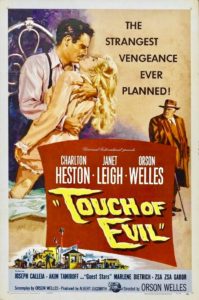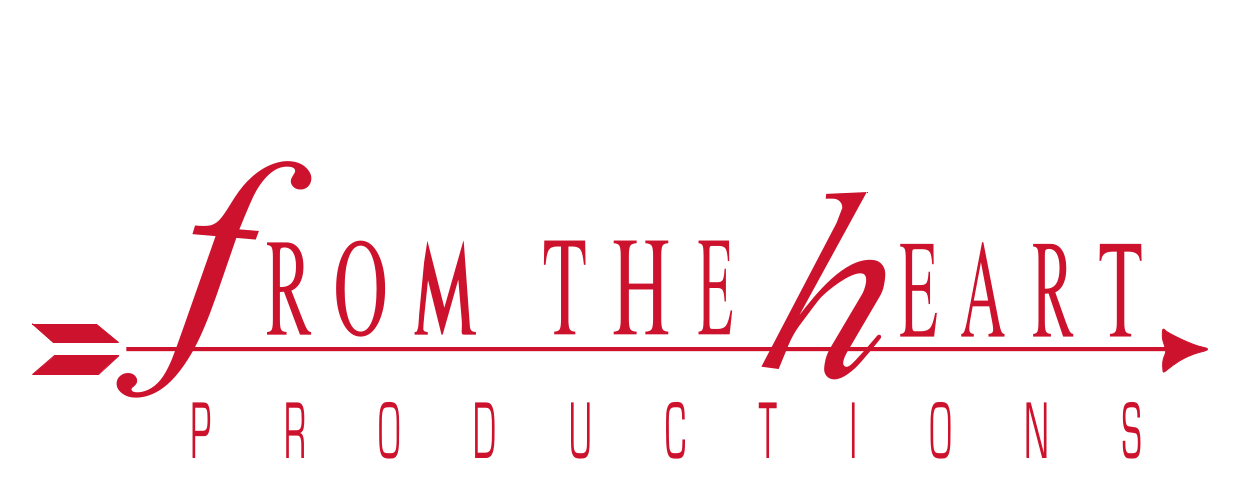We’ve not just got his work to watch and listen to. We’ve also got his notes.
After we’ve watched and enjoyed Orson Welles classic film noir “Touch of Evil” for the 27th time, what do we remember? Is it the amazing long continuous shot that opens the movie? The dramatic final confrontation in the oil fields? How about the incredible varied and creative way he uses music in the film?
On my The Art of Film Funding Podcast, I interviewed award winning composer and Roy W. Dean Grant donor, David Raiklen. We both share a love of movie scores, Orson Welles, and his classic thriller “Touch of Evil”.
I knew the music was integral to the film. It defines characters, sets the atmosphere, and compliments the action. What I didn’t know was how Orson Welles planned out the music and how it was to be used before he shot the film.
David explained he left detailed notes for his composer, Henry Manicini, and his sound mixer. In my latest video, I cover what filmmakers can learn from those important notes on placing music in their films.
Imagine How Music Will Be Used in a Scene Before Its Shot
The opening scene is probably the longest continuous shot that’s been executed on film without CGI. It follows a bomb in the trunk of car as it heads to a border crossing down a city street filled with people.
Instead of using a traditional score, Orson wanted to use source music. He directed the scene knowing this. As we follow the action, the music appears to come naturally from car radios and musicians that are in the shot.
This music, David describes, was specifically created for A “Touch of Evil” and it creates a magical environment.
It’s not like a typical movie score. It sounds natural as it comes from sources in the shot. But, as music changes as the scene progresses, it’s jarring as well and puts us on edge.
Use Music That Fits the Characters
For example, the characters are walking down the street in a town where they have lots  of live bands. The music the characters in the movie are hearing is the same music that the audience is hearing. But, because the camera is moving around to different groups of characters, the music is constantly changing.
of live bands. The music the characters in the movie are hearing is the same music that the audience is hearing. But, because the camera is moving around to different groups of characters, the music is constantly changing.
The Mexican characters are listening to very festive mariachi music while the detective people are listening more to cool jazz.
This is the sort of thing that their character would listen to but it also tells us emotionally what to feel and gives us insight into the character. It’s source music, it’s character themes, and it’s dramatic underscore telling the story on multiple levels at the same time.
To make it happen was very complicated. Henry Mancini said it was one of the most difficult things he’d ever done. Without the notes and detail Orson Welles provided, it would have never been accomplished or attempted. That music is part of what makes that first scene so involving.
Consider How Sound Will be Mixed
Orson didn’t stop with notes to the composer. He also had a note for the mixer. While most films have a clean, high quality sound, he knew that would not be great if source music was being use.
“The characters are listening to music as they walk down the street,” Orson detailed, “and if the music sounds perfect like it was recorded in a studio, that will destroy the illusion that the characters are walking down the street.”
He suggested they take several loud speakers from your studio and put them out in the alley that’s behind the dubbing stage. Then, record the sound of the microphone traveling down the alley behind the stage on a dolly. This would be like the microphone was the character’s point of view and we’re following them down the street.
When you hear the sound in A Touch of Evil in this first street scene you will truly appreciate all of the great creative genius that went into making it. Getting your sound to enhance and support your story is paramount to a successful film.
Carole Dean is president and founder of From the Heart Productions; a 501(c)3 non-profit that offers fiscal sponsorship for independent filmmakers. She hosts the weekly podcast, The Art of Film Funding, interviewing those involved in all aspects of indie film production. She is also the author of The Art of Film Funding, 2nd Edition: Alternative Financing Concepts. See IMDB for producing credits.




